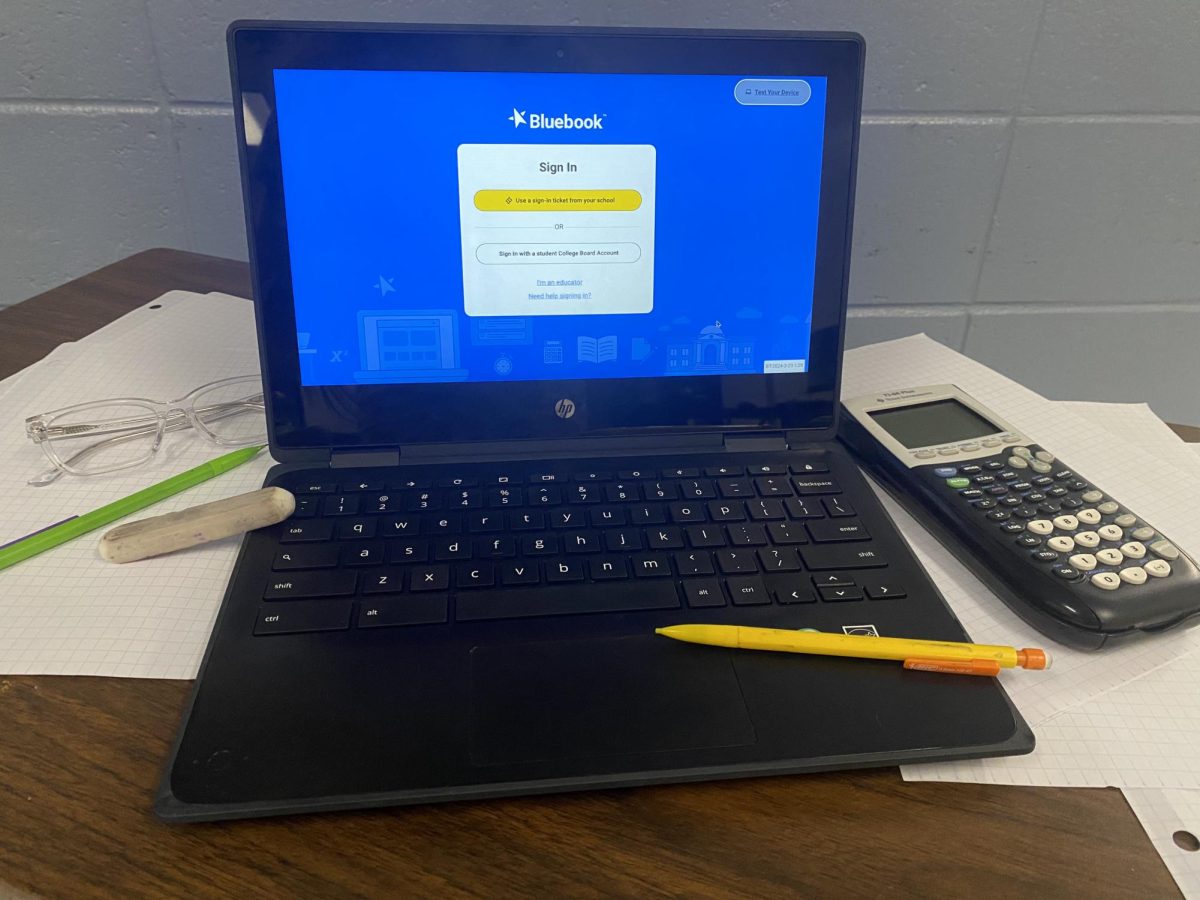The SAT, which is composed of two English and two math sections, was traditionally done on pencil and paper. However, in March 2024, it switched to Bluebook, an online testing application, creating distractions and disadvantages for test takers.
On the English sections, quick annotations are a thing of the past. One of the most crucial parts to test taking is being able to underline and write in important notes. The online SAT requires multiple steps just to be able to write in a few notes.
When making annotations, users have to click some buttons and select different tools, and then type in what they want, and then click enter. If a user moves onto another question, the process starts all over again.
When using pencil and paper, the pencil never leaves the user’s hand, allowing for quick annotations. As unimportant as it may seem, the whole process of having to go through multiple steps takes away valuable time from actual test taking, even if it is just a few seconds per question.
The SAT takes 3 hours and 15 minutes to complete, which means for around 3 hours, students are staring at a screen. It is straining to look at screens for an extended period of time, since blue light, which is the light emitted from computers and devices, can damage retina cells and cause eye fatigue.
Studies show that when reading online, the brain is worse at processing and understanding information , due to the fact that there are factors that subconsciously require attention, including the different colors of blue light and having to scroll while reading.
Another big issue with online SAT testing and the use of devices is the sounds they emit. To move from one question to the next, students have to click the ‘next’ button. Depending on what they are using, a Chromebook with a built-in mousepad or a bluetooth mouse, it can get extremely annoying.
Constantly hearing the clickety-clacks of keyboards and mice create distractions for students who are trying to solve complex math problems or read detailed passages. In a typical setting, some students would be able to wear noise-canceling headphones or earbuds to help with the noise, but not when taking the SAT, since they do not allow it.
Fortunately, one of the best things about digital SAT testing is the ability to self-pace. Within the test, there is a timer that shows how much time is left before a module is over. The timer starts as soon as students begin the test.
Students are also able to “pause” the test, but not the timer, and take breaks whenever they like. This means that students can pace themselves and be more conscientious of their time within the test.
If students are able to start the test at different times, this means that students will be finishing at different times. While most breaks between modules are around the same time, some students might have had difficulty starting the test, which means their test will end later than those around them. This means that while everyone else is causing a commotion getting up to stretch and use the bathroom, other students are trying to focus and finish their tests.
In the ever-growing age of technology, many think that online testing will fit with the times and allow for more freedom. Online SAT testing only takes away the good aspects of traditional testing.
Digital SAT testing means more distractions, time-consuming holes to jump through when making notes and annotations, quicker fatigue, and potentially lower scores. College board, keep it traditional, not digital.
The next national administration of the SAT is scheduled for May 4, 2024.
Opinions expressed in editorials are those of the writer(s). These views may not represent the adviser, The Prowler, advertisers/sponsors, the Starr’s Mill High School administration or staff , or Fayette County Public Schools as a whole. Please see our FAQs for more information pertaining to the rights of The Prowler’s staff members.


